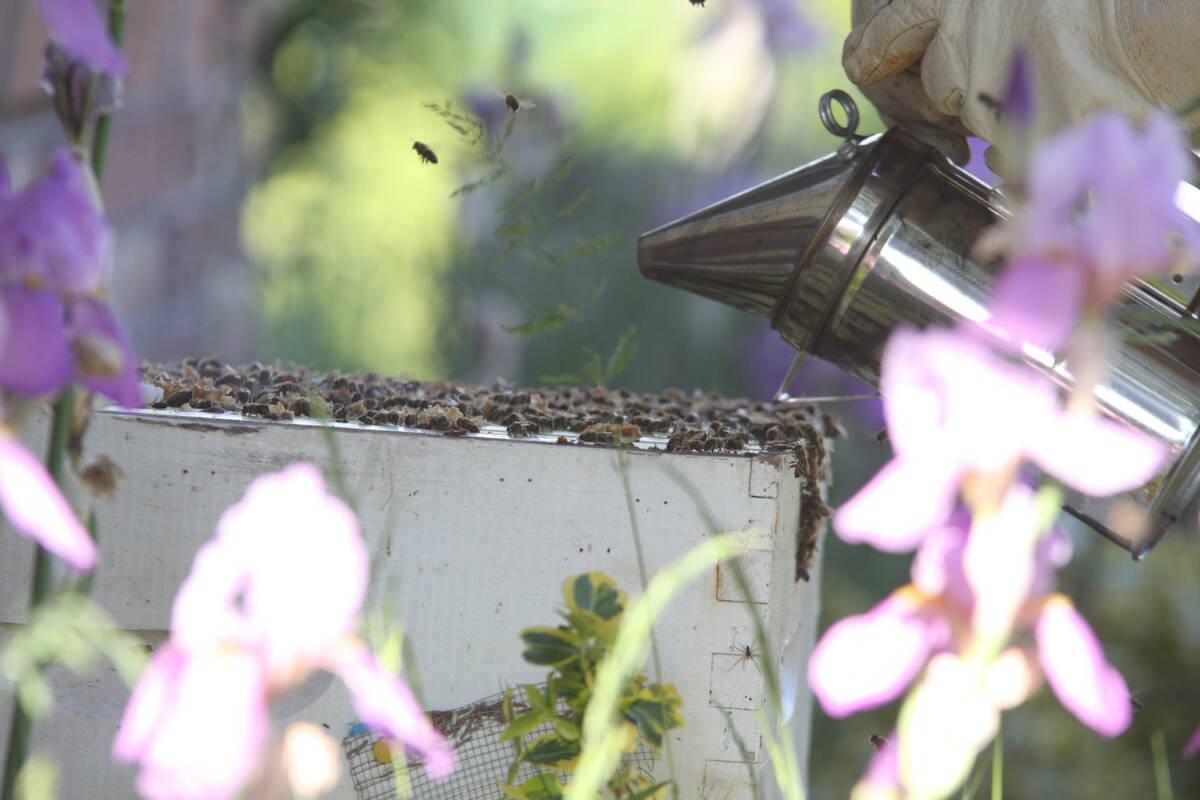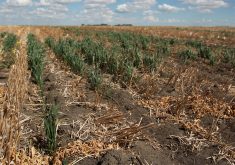Glacier FarmMedia – Manitoba’s honey producers are grappling with financial challenges after another consecutive year of significant colony loss.
This spring gave little relief from the industry’s now four-year streak of poor survival rates. Initial reports put 2024-25 winter colony losses at 34.8 per cent, according to the Canadian Association of Professional Apiculturists.
Since then, Manitoba Agriculture has raised that number to 43 per cent.
Read Also

Saskatchewan puts crown land auction on hold
Auctions of Saskatchewan crown lease land are once again on hold.
Manitoba has had a significant upswing in tame bee deaths, starting in 2022. That year, coming on the heels of Manitoba’s worst drought in recent memory, saw a devastating 57.2 per cent final colony loss count, the highest of any province. Government AgriRecovery aid was later triggered.
Since then, winter losses have stubbornly remained at 30 per cent colony loss or higher. The four-year provincial average is now 42 per cent winter loss.
“If this trend continues, it would be a non-viable industry,” said Mike Clark, director with the Manitoba Beekeepers’ Association.
Clark’s operation lost 97 per cent of its colonies in 2022 and has only recovered up to 60 per cent of pre-crisis levels, despite years of rebuilding efforts.
Manitoba’s troubles are part of a wider concern for Canada’s beekeeping sector.
Together, the Prairies account for nearly 70 per cent of Canada’s honey production and colony numbers. Alberta makes up a large part of that, with 38 per cent of Canada’s colonies last year and 42.6 per cent of its honey tonnage, but Manitoba ranks second, producing 19.4 per cent of Canada’s honey last year with 13.7 per cent of the nation’s colonies.
“The Prairies accounted for some pretty significant losses,” said Rod Scarlett, executive director of the Canadian Honey Council.
“Saskatchewan, Manitoba and New Brunswick were all kind of on the upper echelon.”
Initial 2025 counts had New Brunswick at 44.7 per cent colony loss and Saskatchewan at 43.8 per cent. Canada’s lead honey-producing province, Alberta, was hit by 39.3 per cent loss.
Weather hasn’t done beekeepers any favours. Among other issues, such as drought-dwindled nectar supplies, apiarists have pondered whether some extended falls have disrupted bees’ ability to prepare for winter.
One of the other undisputed culprits, however, has been growing varroa mite pressure.
Beekeepers have noted a decrease in control from products previously reliable in keeping the parasites in check. Recent years have seen a race for alternative controls, including trickier-to-use organic acids and more complicated integrated management plans.
“A lot of it has to do with the degree of varroa, the amount of varroa that’s left in the hive over winter. Varroa is kind of a pest that sucks on the bee’s guts and spreads diseases,” Scarlett said.
The Canadian Honey Council has flagged the need to find new chemical treatments against varroa mite.
“We certainly need at least one, but preferably two, new hard chemicals that beekeepers could use to collect to combat varroa,” Scarlett said.
Research is ongoing, and Canadian beekeepers are working closely with their U.S. counterparts to expedite approval processes for any effective treatments that emerge, Scarlett added.
The overwintering losses also represent only part of the problem, Scarlett said. Beekeepers face additional losses during spring dwindle, potentially adding another three to five per cent to colony mortality.
Hive recovery may then hit at the farmer’s honey harvest.
Replacement stock supplies have been tight in recent years. At times, high winter losses ran headlong into pandemic air shipment bottlenecks. The lack of replacement has led to a controversial debate in the industry as to whether Canada should reopen the U.S. packaged bee trade, which has been cut off for decades due to concern about spreading pests.
The alternative is splitting hives, but the split hives won’t produce as much honey for the season.
“The work that beekeepers do to maintain numbers can, in fact, impact honey production,” Scarlett said.
Manitoba beekeepers have also noted mounting environmental challenges.
Eckhard Rinsdorf, a beekeeper in Minitonas, Man., who operates in the Swan River Valley, has witnessed dramatic biodiversity decline over his 25 years in Canada.
“The first time I came to the Swan River Valley was 1999, in the fall, and the farmers were plowing the fields…. There were three tractors going along the highway, and each tractor had 500 to 1,500 seagulls behind it, picking the worms that live out there. And if I drive now along the fields, whether farmers are plowing or not, there’s a few crows on the field, but that is it,” he said.
He pointed the finger at intensive chemical applications. It is his view that agriculture needs more focus on “the biology of farming.”
Like any other kind of livestock, bees need water. That’s been a problem during the province’s drought years, 2025 included.
According to the province’s July 27 crop weather report, only a few areas had topped even 80 per cent of normal moisture for the year. Between May 1 and July 27, some areas of the Interlake had seen as little as 50 millimetres of rain (26 per cent of normal).
Clark now hauls water to three of his 30 bee yards during dry years, setting up 35-gallon drums with straw and wood to prevent drowning.
“The (bees) use water, of course, to drink, but they also use water to dehydrate and fan to create artificial air conditioning,” he said.
The water shortage affects more than managed honeybees, he added.
“If there’s other wild bees or other pollinators in there, and my bees can’t find water, then the natural pollinators definitely can’t find water, either.”
Despite awareness campaigns and tools to avoid insecticide drift, beekeepers still say they’ve seen issues. Canola is a major feed crop for Prairie beekeepers, but it’s also a major income driver for grain producers, who want to protect their yield.
By the beekeepers’ view, though, protecting pollinators also has a key role in crop performance.
“It’s very disheartening when you see your bees already struggling and then notice a sprayer moving through a field of canola in full bloom in the middle of the day,” Clark said.
“In those moments, it’s hard not to think about how the bees are being harmed and how the farmer may also be unintentionally reducing their own crop yield.”
He said bees exposed to agrichemicals can then bring those problems home to the hive because bees socially groom.
Honey prices have had some good times in recent years, although recent prices pale in comparison to peaks seen during the pandemic.
However, Clark thinks prices are still depressed below what is acceptable, given the years and years of productive loss.
“When you see these losses, you should be seeing honey prices skyrocketing,” he said.
In Clark’s opinion, depressed honey prices are attributed to “unethical” fraudulent honey imports, a thorn in the side of Canada’s honey sector for years.
AgriStability programs initially helped beekeepers survive the crisis, but now provide minimal support due to the program’s five-year average calculations,” Clark said.
“There’s no safety net for the bee industry anymore. It’s been used up.”
Clark’s operation, which once employed up to 15 people managing more than 3,000 colonies, has been reduced to a solo spring operation to cut costs, though he does hire high school students to help during harvest.
Clark has also deferred truck maintenance and pushed off normal operational expenses.
Despite the challenges, industry leaders maintain measured optimism, particularly if honey prices respond to supply constraints.
“There’s always room for optimism, particularly based on honey pricing. If the price of honey goes up, you don’t need as many colonies to make money,” Scarlett said.
For Rinsdorf, the path forward requires balancing biological and mechanical approaches to agriculture.
“I see a future for the beekeeping industry, but we have to learn. We have to make sure that we breed queens that are resilient enough for our weather,” he said.
“We’ll have to update to the challenge that is there, but it will be a challenge for the rest of agriculture as well, to switch things around and think a little bit more about biology.”
















